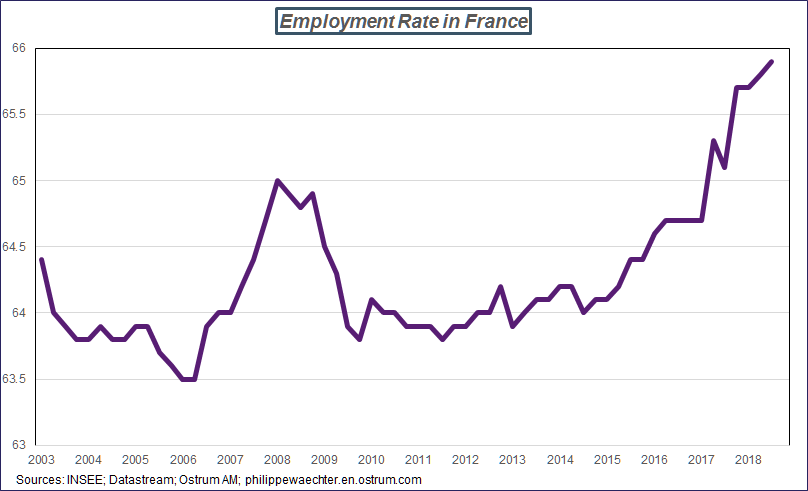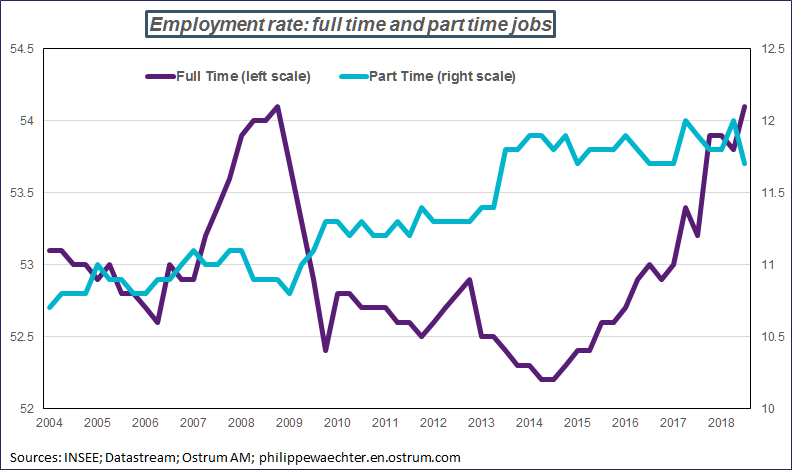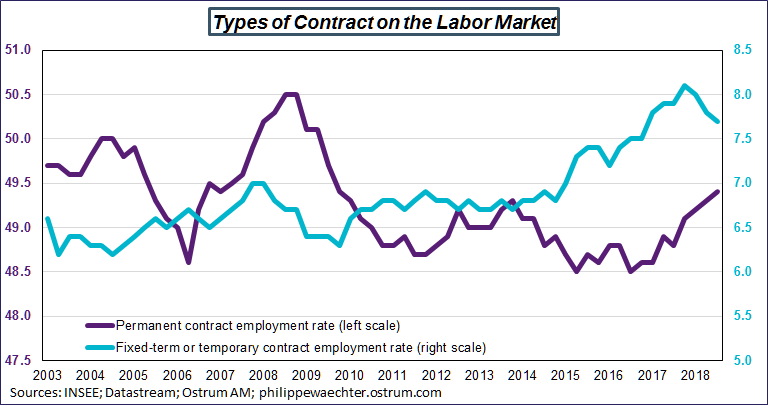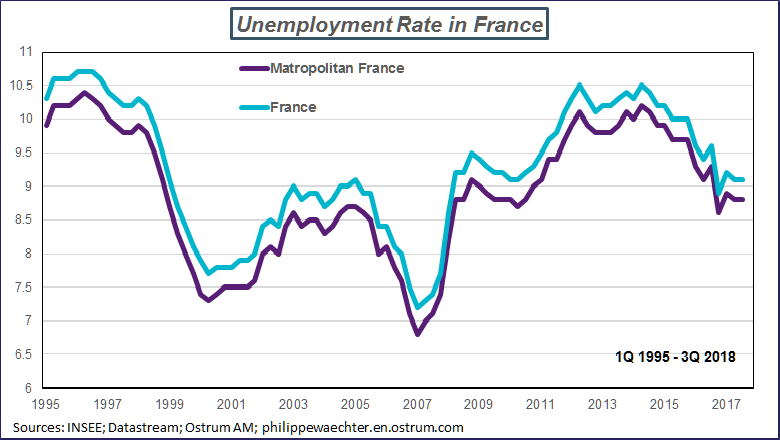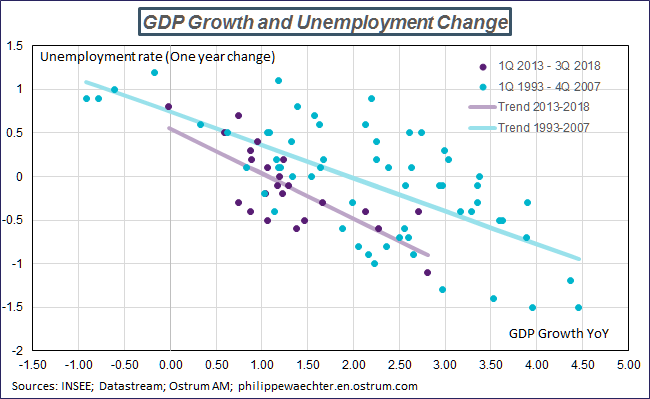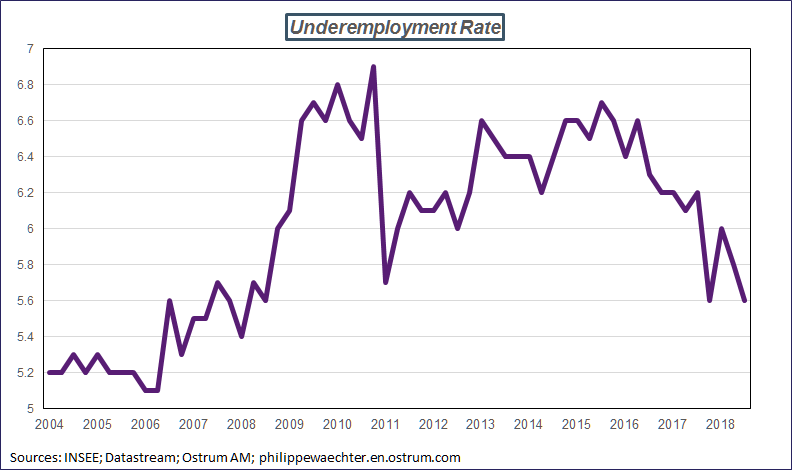The unemployment rate is stable in France in the third quarter. It stands at 8.8% for metropolitan France, as it was during spring and at 9.1% when overseas departments are included, again as it was in the second quarter. The pace of the unemployment rate is consistent with that of the economic cycle. Nevertheless, it reacts now a bit faster to the evolution of growth than before the 2008 crisis.
All the indicators suggest that growth is richer in jobs and that it regains some virtue with the increase in full-time work, the rise in fixed-term contracts and the decline in the share of fixed-term contracts.
The labor market is becoming more flexible and it is certainly a positive factor for the dynamics of employment. It is now necessary to improve the training component to further improve this phenomenon by enriching human capital. The aim is to bring down unemployment permanently and move towards full employment. The law passed last summer can contribute to it, it must now be implemented efficiently.
The peak of the cycle was reached at the end of 2017, the period during which growth momentum was high while the unemployment rate declined rapidly.
We can look at the joint evolution of the unemployment rate and the growth rate of GDP on the next graph. I took two distinct periods. The first part of 1993 (date which marks a change in the relationship between GDP and employment) and goes until the end of 2007. The second period starts with the cyclical recovery of 2013 until the third quarter of this year. I withdrawn the period of the 2008 crisis and that of the sovereign debt crisis that may appear particular with more pronounced adjustments.
On the scatter graph I present a trend for each period. The slope of the trend represents the elasticity of the unemployment rate to the GDP growth rate. It appears that compared to the pre-crisis period, the unemployment rate, now, seems to react more quickly to the evolution of the activity. The elasticity would be around -0.5 against -0.3 before. It takes less growth to trigger a drop in the unemployment rate.
Among the statistics published with the unemployment rate for the third quarter, it should be noted that the employment rate has never been so high since the beginning of the series in 2003, with a bullish trend since 2015.
The number of jobs is increasing. but this may also reflect a lack of productivity dynamics. The French economy generates more jobs, but maybe is it a response to the weak productivity trend. This is a look that has been caricatured in Britain, GDP growth has almost no dependence on productivity but mainly employment. It’s not necessarily virtuous.